 Samsung Chromebook (XE303) Review: Testing ARM's Cortex A15
Google announced the Chrome OS project two years ago, and with it came the first Chromebook: the CR-48. The Chrome OS concept seemed revolutionary at the time. In 2010 we were well into the latest round of questioning whether today's PCs were fast enough. The Ultrabook revolution hadn't yet begun, and the iPad was starting to gain momentum. Capitalizing on the market being flooded with poor quality, yet affordable PC notebooks that still struggled with the same virus/malware issues they'd been facing for years, Google took the opportunity to attempt to revolutionize the PC OS.
Chrome OS was that attempt at a revolution. As an OS built around a web browser, Chrome OS offered many of the advantages that the Chrome browser itself brought to the table: sandboxing and constant/painless updates. All user data is encrypted on the drive by default. Security was and remains a major feature of Chrome OS.
Google's revolution extended to hardware as well. The Cr-48 notebook delivered a good keyboard, trackpad and solid state storage. Future Chromebooks would do the same. While the price points of these machines (<$500) kept ultra high resolution IPS displays out of the bill of materials, Google promised good build quality and solid state storage - two things you couldn't find in cheap notebooks of the time.
Samsung Chromebook (XE303) Review: Testing ARM's Cortex A15
Google announced the Chrome OS project two years ago, and with it came the first Chromebook: the CR-48. The Chrome OS concept seemed revolutionary at the time. In 2010 we were well into the latest round of questioning whether today's PCs were fast enough. The Ultrabook revolution hadn't yet begun, and the iPad was starting to gain momentum. Capitalizing on the market being flooded with poor quality, yet affordable PC notebooks that still struggled with the same virus/malware issues they'd been facing for years, Google took the opportunity to attempt to revolutionize the PC OS.
Chrome OS was that attempt at a revolution. As an OS built around a web browser, Chrome OS offered many of the advantages that the Chrome browser itself brought to the table: sandboxing and constant/painless updates. All user data is encrypted on the drive by default. Security was and remains a major feature of Chrome OS.
Google's revolution extended to hardware as well. The Cr-48 notebook delivered a good keyboard, trackpad and solid state storage. Future Chromebooks would do the same. While the price points of these machines (<$500) kept ultra high resolution IPS displays out of the bill of materials, Google promised good build quality and solid state storage - two things you couldn't find in cheap notebooks of the time.
For Chrome OS and Google's Chromebooks to remain relevant, they also had to move down the pricing stack. With its most recent announcement, Google has done just that. The new Chromebook (Samsung XE303C12) is priced at $249, while maintaining much of what made its predecessors interesting.
Even more interesting than its aggressive price point is the choice of SoC inside Google's new Chromebook: Samsung's Exynos 5 Dual, featuring two ARM Cortex A15 CPU cores. This move makes the new Chromebook the very first non-x86 machine to ship with Chrome OS. Given that I also happen to have a dual-core Atom based Chromebook from 2011, the new Exynos 5 based machine gave me a unique opportunity to get a preview of how ARM's next-generation CPU core would stack up against Atom.
Read on for our review.
Inside the Titan Supercomputer: 299K AMD x86 Cores and 18.6K NVIDIA GPUs Earlier this month I drove out to Oak Ridge, Tennessee to pay a visit to the Oak Ridge National Laboratory (ORNL). I'd never been to a national lab before, but my ORNL visit was for a very specific purpose: to witness the final installation of the Titan supercomputer. ORNL is a US Department of Energy laboratory that's managed by UT-Battelle. Oak Ridge has a core competency in computational science, making it not only unique among all DoE labs but also making it perfect for a big supercomputer. Titan is the latest supercomputer to be deployed at Oak Ridge, although it's technically a significant upgrade rather than a brand new installation. Jaguar, the supercomputer being upgraded, featured 18,688 compute nodes - each with a 12-core AMD Opteron CPU. Titan takes the Jaguar base, maintaining the same number of compute nodes, but moves to 16-core Opteron CPUs paired with an NVIDIA Kepler K20 GPU per node. The result is 18,688 CPUs and 18,688 GPUs, all networked together to make a supercomputer that should be capable of landing at or near the top of the TOP500 list. Over the course of a day in Oak Ridge I got a look at everything from how Titan was built to the types of applications that are run on the supercomputer. Having seen a lot of impressive technology demonstrations over the years, I have to say that my experience at Oak Ridge with Titan is probably one of the best. Normally I cover compute as it applies to making things look cooler or faster on consumer devices. I may even dabble in talking about how better computers enable more efficient datacenters (though that's more Johan's beat). But it's very rare that I get to look at the application of computing to better understanding life, the world and universe around us. It's meaningful, impactful compute. Read on for our inside look at the Titan supercomputer.
The Windows RT Review Meet Windows RT. It’s Microsoft’s first major foray into the modern tablet market, the shipping version of Windows-on-ARM, and it’s one of Microsoft’s most important product launches ever. Windows 8 shares the same touch-friendly user interface, but the ARM silicon makes RT an almost entirely tablet-centric operating system, the first for Microsoft. Combined with the focus on premium hardware experiences, this is Redmond’s most serious push to be competitive with the iOS and Androids of the world. How does it fare? Keep reading.

GeIL Evo Veloce Review: 2x8GB at DDR3-2400 C11-12-12 1.65 V As part of a series of memory reviews, the next kit to enter our test beds is a limited edition enthusiast kit from GeIL. Attached with what GeIL is calling a ‘Frost White’ colored heatsink, this is a two module dual channel kit with a total of 16 GB running at DDR3-2400 MHz at 11-12-12-30 sub-timings, and retails for ~$150. Read on for the full review.
Samsung Galaxy Note 2 Review (T-Mobile) - The Phablet Returns So I have a confession to make. What seems like an eternity ago, I received a Galaxy Note review unit for AT&T, but never quite finished my review. While the reasons for that were no fault of the device and rather the result of some other personal failings, I spent a lot of time with the original Note really trying to size up the experience of using the world’s first smartphone that crossed over into tablet territory — a so-called “phablet.” If anything, the original Galaxy Note drove home for me just how dangerous it can be to make conclusions about a handset or mobile device before you’ve held it in your hands. There’s this constant tug of war in the tech space between making a quick conclusion based on what evidence and data is laid out before you, and waiting a week, a few weeks, or even a month and then writing in hindsight looking back how the whole experience turned out. In the smartphone space, the pace is even more rapid with week long review cycles or shorter, and thus we see many trying to draw conclusions based on form factor, display size, and lots of speculation. For me, the original Galaxy Note roughly defined an upper bound for mobile devices that are still ultimately pocketable, and I was surprised just how easy it was to grow accustomed to. The original S Pen showed up right around the height of the draw something app craze, and the result was a ton of attention to a device that many initially criticized for its size and inclusion of stylus. The story today however is about the Galaxy Note 2, which I’ve been using for one solid week now. Subtract out the time spent battery life testing, and it’s really only been a few days, but my experiences and thoughts about the Note 2 really mirror those that solidified with the original Note and the Note 2’s smaller sibling, the Galaxy S 3. It’s an upper bound for smartphone size, but ultimately the right one, if your pockets can handle it. Read on for the full review.
NVIDIA Releases 310.33 Beta Drivers; GeForce 6 & 7 Series Moved To Legacy Status It would appear that on top of everything else going on this week, this is also a big week for video drivers. Following AMD’s major release of Catalyst 12.11 earlier this week, NVIDIA has their own driver release this week with the release of their 310.33 beta drivers. These drivers are the first public release of the previously announced R310 family, making this the 4th major driver family release for NVIDIA this year (R295, R300, R304, R310). From a feature standpoint these drivers won’t offer a big change for most end users right away, but Windows 8 users will be in for a treat. Thanks to Windows 8’s new stereoscopic 3D functionality, these drivers add windowed S3D support for a multitude of applications and games, including YouTube 3D, various Blu-Ray players, and all DX9 games. Meanwhile developers will want to play close attention to these drivers for new API functionality they expose. These are the first drivers to support OpenGL 4.3, which among other things means this is the first GeForce driver set to have support for new features such as OpenGL compute shaders, along with full OpenGL ES 3.0 superset functionality. As for CUDA developers these are the first GeForce drivers that will support the recently released CUDA 5. Feature additions aside, for most users the biggest benefit these drivers will bring will be performance improvements, bug fixes, and new game profiles, and like any new NVIDIA driver branch 310.33 comes with a mix of all of those. On the performance side of things NVIDIA is claiming that these drivers offer notable performance improvements for GeForce 600 users in Skyrim, Starcraft II, and Batman: Arkham City, among other games. Interesting the former two tend to be quite CPU limited (and Batman isn’t far behind), so it’s not where we’d typically expect to see significant performance improvements. We haven’t had a chance to test these drivers, but NVIDIA’s own performance analysis is available over at GeForce.com. Going by NVIDIA’s numbers this isn’t going to be the kind of major performance boost that AMD’s Catalyst 12.11 was – and we weren’t expecting it to be – but it’s a decent performance boost all the same. As for bug fixes and profile improvements, the most notable change is the return of MSAA support for Diablo III. Otherwise it’s a fairly typical (and extensive) collection of profile updates, including an updated SLI profile for DiRT: Showdown and an updated Ambient Occlusion profile for CS:GO. Finally, with these drivers we’ll be bidding adieu to support for the last of NVIDIA’s DirectX 9 GPUs. As previously announced by NVIIDA, starting with R310 NVIDIA is formally moving the GeForce 6 and 7 series to legacy status. NVIDIA retired their earlier NV30 architecture based GeForce 5 FX series relatively quickly with R175 back in 2008, but they have supported the newer and far more successful NV40 based 6 and 7 series for much longer. By our count it has been nearly 8 years since the first of those cards was released and 5 years since the last, marking the end of what has been the longest support cycle for consumer GPUs that we have yet to see. We’re still waiting to get confirmation from NVIDIA about what legacy status entails in this case – whether it means reduced driver updates (ala AMD HD 2000-4000) or a complete end to driver updates – but given how long NVIDIA has supported these cards it’s likely the latter. Starting with R310 NVIDIA’s minimum supported hardware will be the GeForce 8 series. If NVIDIA’s DX9 GPU support is anything to go by, then considering the slower pace of upgrades in recent years and just how long NVIDIA has sold GeForce 8 GPUs – particularly G92 – we wouldn’t be surprised to see them support their DX10 GPUs for as long as or longer than they did their DX9 GPUs.
DigitalStorm Bolt Gaming System Review: It's Little But It's Fierce Since I've started reviewing boutique desktops I've been of the opinion that while they're not strictly for enthusiasts, the enthusiast market is one that boutiques can tap into by offering something that can't simply and easily be built. It's not just important for these small companies to differentiate from each other in a general sense, but there really does need to be something they offer that allows them to compete on something other than price. Over the past year a number of them have started to produce systems with custom cases, and DigitalStorm in particular is now on their second custom chassis with the system announced yesterday and reviewed today, the Bolt. DigitalStorm is positing it as the thinnest gaming desktop available, a claim that has to compete with Falcon Northwest's 4"-wide Tiki and Alienware's 3.75"-wide X51. Just being a tenth of an inch thinner than the X51 isn't going to be enough, though. Is the Bolt worth your attention, or does it need to go back to the drawing board?
Understanding Apple's Fusion Drive During its iPad mini launch event today Apple updated many members of its Mac lineup. The 13-inch MacBook Pro, iMac and Mac mini all got updated today. For the iMac and Mac mini, Apple introduced a new feature that I honestly expected it to debut much earlier: Fusion Drive. The idea is simple. Apple offers either solid state or mechanical HDD storage in its iMac and Mac mini. End users have to choose between performance or capacity/cost-per-GB. With Fusion Drive, Apple is attempting to offer the best of both worlds. The new iMac and Mac mini can be outfitted with a Fusion Drive option that couples 128GB of NAND flash with either a 1TB or 3TB hard drive. The Fusion part comes in courtesy of Apple's software that takes the two independent drives and presents them to the user as a single volume. Originally I thought this might be SSD caching but after poking around the new iMacs and talking to Apple I have a better understanding of what's going on. For starters, the 128GB of NAND is simply an SSD on a custom form factor PCB with the same connector that's used in the new MacBook Air and rMBP models. I would expect this SSD to use the same Toshiba or Samsung controllers we've seen in other Macs. The iMac I played with had a Samsung based SSD inside. Total volume size is the sum of both parts. In the case of the 128GB + 1TB option, the total available storage is ~1.1TB. The same is true for the 128GB + 3TB option (~3.1TB total storage). By default the OS and all preloaded applications are physically stored on the 128GB of NAND flash. But what happens when you go to write to the array? With Fusion Drive enabled, Apple creates a 4GB write buffer on the NAND itself. Any writes that come in to the array hit this 4GB buffer first, which acts as sort of a write cache. Any additional writes cause the buffer to spill over to the hard disk. The idea here is that hopefully 4GB will be enough to accommodate any small file random writes which could otherwise significantly bog down performance. Having those writes buffer in NAND helps deliver SSD-like performance for light use workloads. That 4GB write buffer is the only cache-like component to Apple's Fusion Drive. Everything else works as an OS directed pinning algorithm instead of an SSD cache. In other words, Mountain Lion will physically move frequently used files, data and entire applications to the 128GB of NAND Flash storage and move less frequently used items to the hard disk. The moves aren't committed until the copy is complete (meaning if you pull the plug on your machine while Fusion Drive is moving files around you shouldn't lose any data). After the copy is complete, the original is deleted and free space recovered.
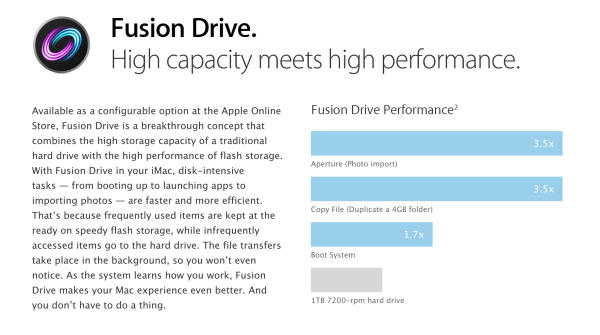 After a few accesses Fusion Drive should be able to figure out if it needs to pull something new into NAND. The 128GB size is near ideal for most light client workloads, although I do suspect heavier users might be better served by something closer to 200GB.
There is no user interface for Fusion Drive management within OS X. Once the volume is created it cannot be broken through a standard OS X tool (although clever users should be able to find a way around that). I'm not sure what a Fusion Drive will look like under Boot Camp, it's entirely possible that Apple will put a Boot Camp partition on the HDD alone. OS X doesn't hide the fact that there are two physical drives in your system from you. A System Report generated on a Fusion Drive enabled Mac will show both drives connected via SATA.
The concept is interesting, at least for mainstream users. Power users will still get better performance (and reliability benefits) of going purely with solid state storage. Users who don't want to deal with managing data and applications across two different volumes are still the target for Fusion Drive (in other words, the ultra mainstream customer).
With a 128GB NAND component Fusion Drive could work reasonable well. We'll have to wait and see what happens when we get our hands on an iMac next month.
After a few accesses Fusion Drive should be able to figure out if it needs to pull something new into NAND. The 128GB size is near ideal for most light client workloads, although I do suspect heavier users might be better served by something closer to 200GB.
There is no user interface for Fusion Drive management within OS X. Once the volume is created it cannot be broken through a standard OS X tool (although clever users should be able to find a way around that). I'm not sure what a Fusion Drive will look like under Boot Camp, it's entirely possible that Apple will put a Boot Camp partition on the HDD alone. OS X doesn't hide the fact that there are two physical drives in your system from you. A System Report generated on a Fusion Drive enabled Mac will show both drives connected via SATA.
The concept is interesting, at least for mainstream users. Power users will still get better performance (and reliability benefits) of going purely with solid state storage. Users who don't want to deal with managing data and applications across two different volumes are still the target for Fusion Drive (in other words, the ultra mainstream customer).
With a 128GB NAND component Fusion Drive could work reasonable well. We'll have to wait and see what happens when we get our hands on an iMac next month.
Microsoft Surface Review A week ago, I sat in an auditorium and listened to Steve Sinofsky talk about the tablet market. He talked about how the iPad was a great device, and a logical extension of the iPhone. Give iOS a bigger screen and all of the sudden you could do some things better on this new device. He talked about Android tablets, and Google’s learning process there, going from a phone OS on a tablet to eventually building Holo and creating a tablet-specific experience. He had nothing but good things to say about both competitors. I couldn’t tell just how sincere he was being, I don’t know Mr. Sinofsky all that well, but his thoughts were genuine, his analysis spot-on. Both Apple and Google tablets were good, in their own ways. What Steve said next didn’t really resonate with me until I had spent a few days with Surface. He called Surface and Windows RT Microsoft’s “perspective” on tablets. I don’t know if he even specifically called it a tablet, what stuck out was his emphasis on perspective. I then listened to Panos Panay, GM of Microsoft’s Surface division, talk about wanting to control the messaging around Surface. He talked about how Microsoft’s June 18th event was scheduled because Surface was about to hit a point in its production where he could no longer guarantee there wouldn’t be substantial leaks about what the product actually was. He talked about the strict usage and testing guidelines everyone at Microsoft was forced to adhere to, again to avoid major leaks. He didn’t want Surface to be judged immediately and cast aside on someone else’s terms, because of some leak. Panos Panay wanted Microsoft to be the ones to bring Surface to market. Sure some rumors leaked about it before the June 18th event. A couple of weeks earlier, while I was in Taiwan, I even heard the local OEMs complaining about it (a lot of the “surprised” public outrage by Taiwanese OEMs was mostly politics). But for the most part, we didn’t know what Surface looked like and we had no concept of its design goals. Touch and Type Cover were both well guarded secrets. Surface is Microsoft’s perspective. With the exception of some technical display discussion, Microsoft hardly mentioned the iPad in our Surface briefing. And when it did, it did so in a positive light. Microsoft isn’t delusional, the iPad is clearly a very well executed tablet. At the same time it believes there’s room for something else. Read on for our full review of Microsoft's first branded tablet: Surface.
ASUS VivoTab, VivoBook, ZenBook and Transformer Book Hands-on The ASUS event was exemplary when it came to tech events in one very key matter: lots of hands-on time. Plenty of devices were available, and the showcase was open for a while, so we got to get a bit intimate with some of the new gear they announced today. So let's have a look.
VivoBook
We'll start with the VivoBook, the most mainstream product that was announced today. The emphasis on affordability is notable, but the design doesn't suffer in the looks department. SKUs will start around $499 and while there was a clear lag in opening apps, owing in large part to the mechanical storage, the interface was easy to navigate and scrolling around images and websites was a breeze. Plenty of color options will be available, and that S400 SKU should bring a vast performance improvement, for not much more scratch.
Transformer Book
I touched on this in the announcement post, but the Transformer Book is really something strange to behold. I've never considered my 13" notebook something I'd want to hold in one hand, but despite the comic proportions, the 13" Transformer Book has a good in the hand feel. The 16:9 aspect ratio of the 1080p screen makes it awkward in one-handed landscape use, but there's a certain strange appeal. I don't see this as a tablet to take on the road, but rather a notebook, whose screen can be untethered from the base. If nothing else, it's the fastest tablet device I've played with, running Sunspider at a scorching 145 ms. No surprise, though; a dual-core Core i7 processor will best anything ARM based.
There's another aspect to the Transformer Book that I hadn't touched on: software. Though Windows 8 is the OS, ASUS has provided their own hub, called Asus Home. It's unclear what plans ASUS has to expend this hub, for now it mostly serves as a resource for modifying various device settings. A chief concern for Windows 8 and RT is the changes to configuration menus, and so it's not surprising for OEMs to try to simplify that with hardware specific apps. ASUS solution is innocuous enough, we just hope that OEMs don't feel the need to add too much to these layers.
Once docked, the Transformer Book doesn’t look so different from the Zenbook line, the keyboard is comfortably wide, with well spaced keys and a broad touchpad. Docking the screen allows it to leverage the included USB 3 ports, mechanical storage and two additional speakers. If you're torn between a small notebook and a large tablet, you might have met your match.
Zenbook
We've met the Zenbook line before, and come way pleased. The form factor remains the same: attractive, sleek and slim. Tapering at all of the edges gives the illusion of an even thinner body, though even at its thickest it's not close to portly. The main addition to the Zenbook line is the optional touch screen on the UX31A and UX500VZ. I wasn't sure how I'd feel about a touchscreen notebook, but it was amazing how quickly I adapted to the paradigm, forgetting so completely about the touchpad that I neglected to test multitouch gestures on it. Unsurprisingly, the touchscreen outperformed the touchpad.
VivoTab RT
There's way more detail in Vivek's review, but in short, the VivoTab RT is the mainstream Windows RT tablet we'll see everyone release. The ASUS variant hits all the specs you'd expect: 10.1" display, Tegra 3 processor, 2GB RAM, a slim, lightweight body. Where it breaks new ground is in the inclusion of the Icera LTE baseband. They didn't have any Icera packing units on hand, but we'll hopefully see those before the holidays.
VivoTab Smart
As the Clovertrail entrant into the Windows 8 Tablet space, the VivoTab Smart carries the burden of Atom. Anand has covered this many times, the Atom core is generations old, and due for a refresh in a big way. Despite this, it has always held an IPC lead over its ARM-based competition, and their efforts have been to bring its power envelope as low as possible. The result, though, is that it felt a hair slower than some of the other hardware on hand. Final software and a trip through the bench may prove me wrong, but for now, I was most dissatisfied with this device, today. The deficit was most evident when switching between apps or opening the app drawer; any long-time Android user will recognize that long pause after hitting the button and actually seeing the drawer open.
ASUS ET2300 All-In-One
The days of the big beige box are long past us. No one misses those days, but are touchscreen all-in-one PC’s the future? ASUS thinks so, and has a stable of models that stretch from 21.5” to 27” and spruces them up with some software flourishes. Touchscreens aren’t new to PC’s, but their adoption hasn’t been rapid, and so software that takes advantage of them is lacking. With Windows 8’s very touch-focused UI, the impetus to incorporate these panels is high, and hopefully so will the impetus to create software for them. For now, in addition to the OS experience, ASUS is featuring a music creation app, more an exhibition than say GarageBand. More software from ASUS should follow, and all Windows 8 Metro apps should work well with the panel. Where questions remain is productivity use cases; when we work on PC’s we use keyboards and mice/trackpads, will that change?
Time will tell on that, but this all-in-one is well appointed, though disappointingly doesn’t come with an SSD. The ET2300 has a 23” 1080p display, and Intel Core i7 processors. The inclusion of Thunderbolt, Intel WiDi 2.0, HDMI input and USB 3.0 give the ET2300 a satisfying degree of future proofing. And while we’d like to see a more impressive discrete GPU, we’re glad to at least see a 2GB video RAM option. The chassis boasts more versatility than pure aesthetics. The dual-hinged design does make manipulating the screen easy, and the chunky display and base leave plenty of room for the aforementioned ports and optical drive.
ASUS Windows 8 and RT Products Revealed ASUS has spent the last few years showing how good design can yield big dividends in the Windows notebook and Android tablet markets. With today’s announcement of their Windows 8 and RT line-up, they marry the two efforts to show off some innovative and impressive new approaches to the traditional PC. Most of the products revealed today are Intel-based, but we’ll start with the lone ARM device, the ASUS VivoTab RT.
ASUS VivoTab Family
The ASUS VivoTab RT will be their first foray into Windows tablets, and it certainly borrows some design elements from its Android predecessors. The docking mechanism has been updated to give the all metallic slate and its dock a more streamlined look. The slate alone is just 8.3 mm thick, and comes in 32GB and 64GB SKUs, with a 10.1” 1366x768 Super IPS+ display. There’s an 8MP/1080p rear-shooter and a 2MP front shooter, and the sides are graced with ⅜” audio jack (headphone/mic combo), microHDMI, microSD and a curious quad-speaker set-up courtesy of SonicMaster. The tablet sports a 25Whr battery, rated at 9 hours per ASUS, with a second 22Whr battery in the dock that pushes run time to 16 hours.
NVIDIA acquired baseband manufacturer Icera earlier this year, and we’ve wondered when we’d see the first collaboration of that marriage. Today’s the day it seems, the VivoTab RT features NVIDIA’s Tegra 3 chipset, alongside the Icera 410 baseband, which brings with it DC-HSPA+ and LTE connectivity. We’re still digging for more details on the baseband, particularly it’s LTE category and manufacturing process, but it will be nice to test a new LTE baseband against the legacy and Qualcomm parts that currently fill the market. At, $599 for the WiFi model, we are definitely competing with higher specced iPad SKUs. If you were considering a Windows RT tablet, though, this one could be a real contender.
In addition to the VivoTab RT there will be two other models, both Intel-based. The VivoTab 11.6” will feature a Wacom Digitizer and stylus for excellent. The Clover Trail-based VivoTab Smart will come with an optional keyboard cover and magnetic Smart Cover, which will fold into a stand for upright use.
ASUS TAICHI
We first saw the ASUS TAICHI at IFA 2012, and not much has changed since then. This dual-screen notebook is an innovative approach to the convertible, and could be a solution to those looking for a tablet and notebook experience. At 1.25 kg, though, this is a heavier tablet experience than we’ve come to expect. Windows 8 is a sufficient departure from the past that there’s room to explore and innovate in software, in a way that hasn’t existed in Windows for sometime. That makes us hopeful that in addition to serving the tablet and notebook dichotomy, that second screen could be put to new and interesting uses. To that end, ASUS is including an optional TAICHI UI that will provide a hub for ASUS provided applications that take advantage of the second display and offer settings for its control. Prices for the TAICHI start at $1299, with a dual-core Core i5 3317U processor (max clock 2.6 GHz), 4GB RAM and 128GB SSD; and prices max out at $1599 with the Core i7 3517 (max clock 3.0 GHz), 256GB SSD and a digitizer and stylus. All should be available this November.
ASUS Transformer Book
Having chosen the VivoTab monicker for their ARM-based Windows tablets, the Transformer brand is inherited by a different take on the tablet/notebook paradigm. Described now as a detachable notebook, the ASUS Transformer Book is marketed as the thinnest and most powerful Core i7-based Windows 8 tablet available. There’s a compelling story to be told in figuring out what is the best combination of power and portability. With the 13” Transformer Book, ASUS is pegging power, at the expense of portability, and the results are intoxicating. The dual-core Core i7 processor flies, seemingly unhindered by thermal or energy limitations. In the tablet itself is a 128GB SSD, with an additional 500GB mechanical drive in the dock. The 1080p 13" display looks great, though the 16:9 form factor gives it an elongated appareance. Connectivity on the tablet itself is limited, but the dock features USB 3.0 and ethernet. Holding a device with that much power in your hand, quickly flying through web pages and photos, it’s the closest I’ve come to being wowed by a tablet in a long time. Its size isn’t going to do it any favors as a mobile device, but I don’t think that’s the point. This isn’t a no compromises tablet, this is a no compromises detachable notebook.
ASUS VivoBook Series
The Vivo name encompasses ASUS devices focused on enhancing the touch experience. The VivoBook series will all feature a metal chassis, with styling unique from the Zenbook family and multi-touch capacitive displays. The initial models will start with the X202 and its 11.6” display, Core i3 processor, 4GB RAM and 500GB mechanical storage. The S400 bumps the display to 14” and processor up to a Core i7, and features an SSD caching scheme with 24GB of NAND and a 320/500GB mechanical drive. Pricing and availability are still unclear, but we will update when we know more. Expect these to slot in below the ZENBOOK line.
ASUS ZENBOOK
The entire ASUS ZENBOOK line is refreshed for Windows 8, with two SKUs getting optional capacitive touch-screens. The top of the line ZENBOOK U500VZ features a quad-core Core i7 processor, 8GB of RAM, NVIDIA’s GT650M GPU with 2GB GDDR5, a 15.6” 1080p display and comes in a dual-256GB SSD RAID 0 configuration for seriously speedy I/O. That’s an impressive amount of kit for about two grand. The mid-tier spec is the UX31A, with your choice of Core i5 or i7 processors, up to 8GB of memory and 256GB SSD for storage. At just 18mm at its thickest, and that 13.3” 1080p capacitive touchscreen, this could be a solid mid-range option.
ASUS ET2300 All-In-One
The ASUS All-In-One lineup gets refreshed, as well, with a new model adding a slightly different form factor. The ET2300 is a 23” Core i7 powered All-In-One that comes standard with the NVIDIA GT630M, Thunderbolt connectivity, WiDi 2.0 and a double-hinged design for folding flat. Touch-centric All-In-Ones are a curious breed, and there market niche seems to still be ill-defined despite the growing number of OEMs adopting the interface. WIth Windows 8 we’ll see a lot more of these this season.
ASUS is taking a broad approach to Windows 8, and that approach is paying dividends with interesting designs and an effort to cover all their bases. So is it a hit? Take a read of our first Windows RT tablet review here, and find out.
Gallery: ASUS Windows 8/RT Line-up
Up Close with the New 27-inch iMac's User Serviceable Memory Panel Both of the 21.5 and 27-inch iMacs use SO-DIMMs, however the 27-inch model does allow for end user upgrades. Remove the power cable and there's a button that will pop out a little panel giving you access to the system's SO-DIMM slots. The 21.5-inch model needs to be taken apart to gain access to the memory slots unfortunately.
13-inch MacBook Pro with Retina Display: Hands On We just spent some time with the other major announcement from today: Apple's 13-inch MacBook Pro with Retina Display. The 3.5 lbs machine is obviously lighter than the 15-inch rMBP but you do give up quad-core and a discrete GPU, which makes this more of an upgrade for 13-inch MBP users than an alternative to the 15-inch rMBP. It may also do a bit to tempt 13-inch MacBook Air users. The same resolution scaling that we discussed in the 15-inch rMBP review is present on the 13-inch model, although I don't yet know the specifics about what scaled resolutions are available. The default resolution is 1280 x 800 scaled to fit the panel's native 2560 x 1600 resolution. I would guess the two higher resolution modes are upscaled 1440 x 900 and 1680 x 1050 but I'll find out for sure later this afternoon. Check out the gallery below for more shots of the 13-inch rMBP.
iPad (4th gen) Hands On Although it's physically no different than the 3rd gen iPad we have some hands on video showing the perf of the new A6X.
Available Tags:Samsung , AMD , NVIDIA , Windows , Galaxy , GeForce , Gaming , Fusion , Microsoft , ASUS , Windows 8 , MacBook , iPad ,








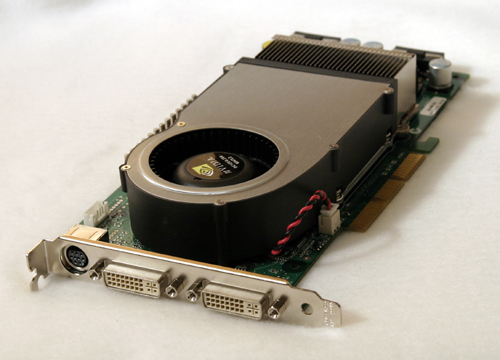
.jpg)
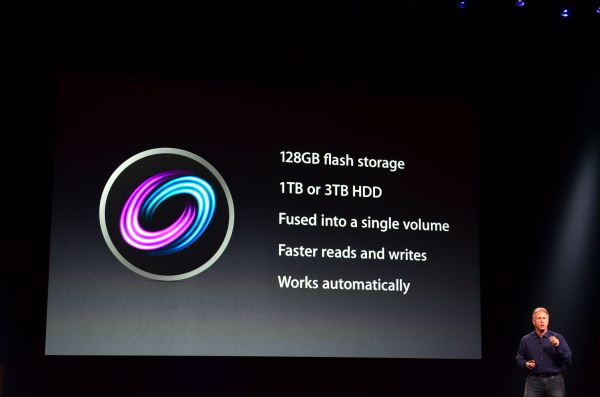
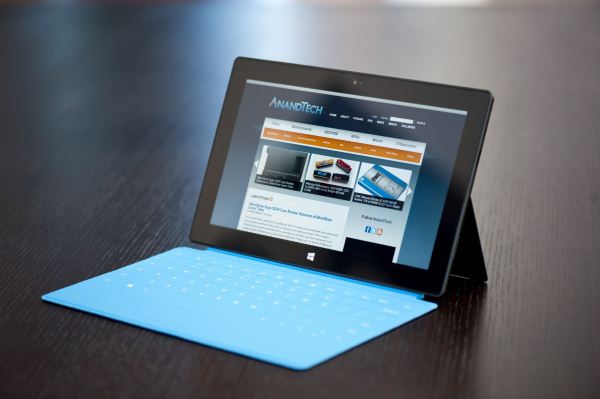
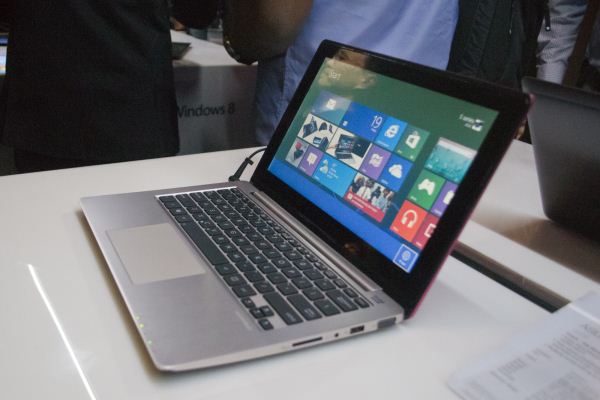
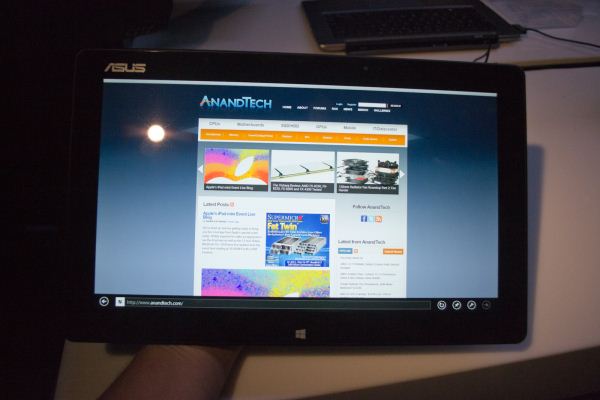

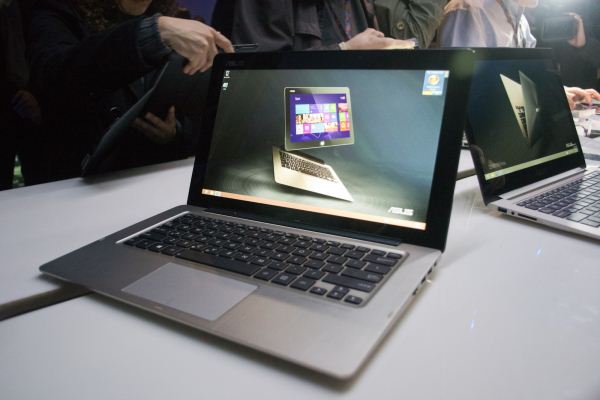


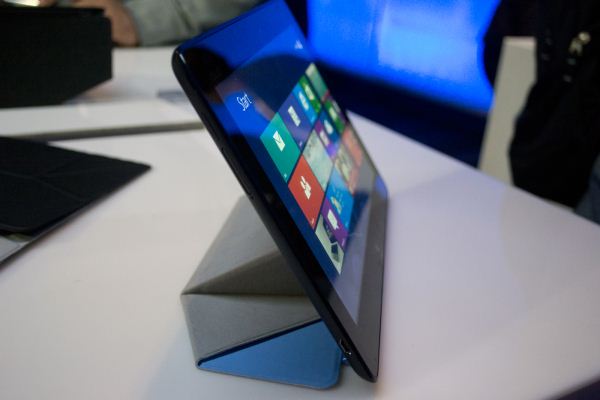
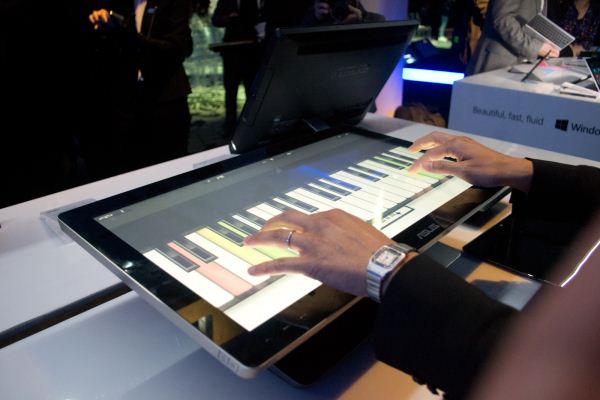


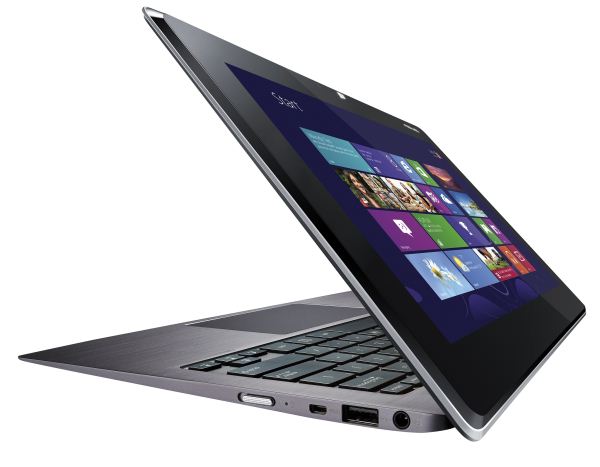
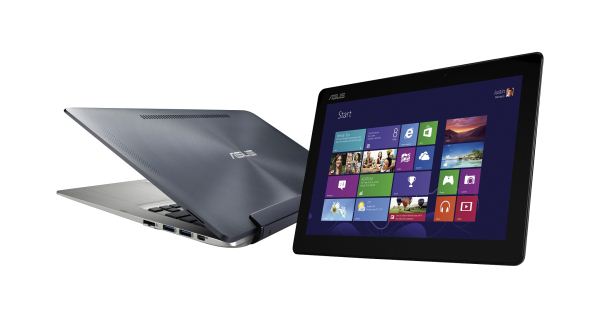
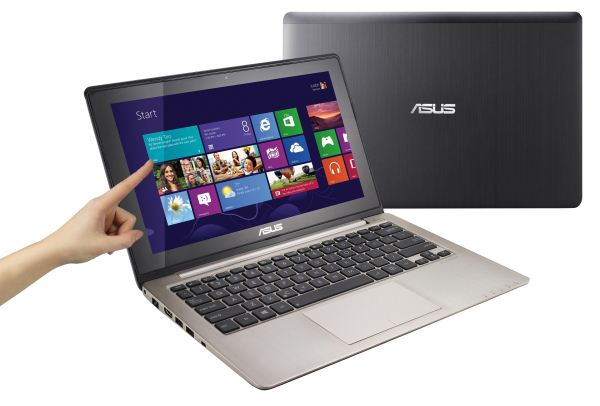
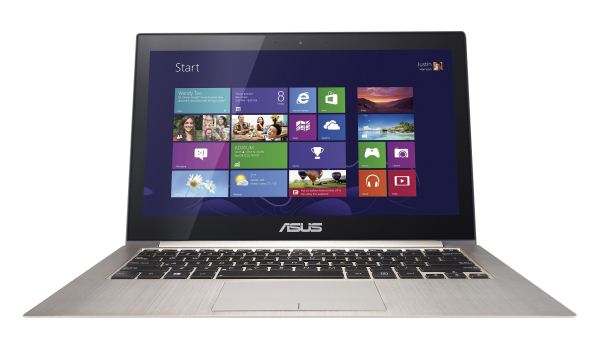







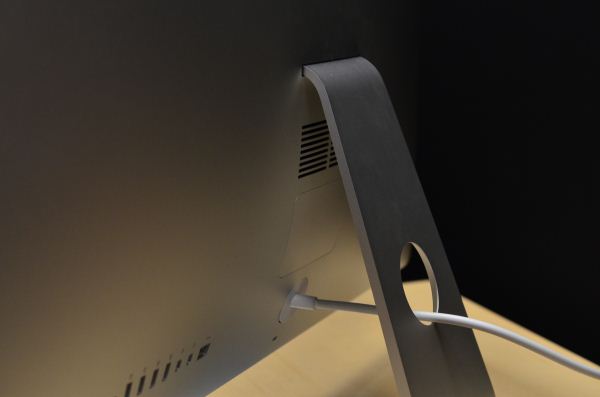
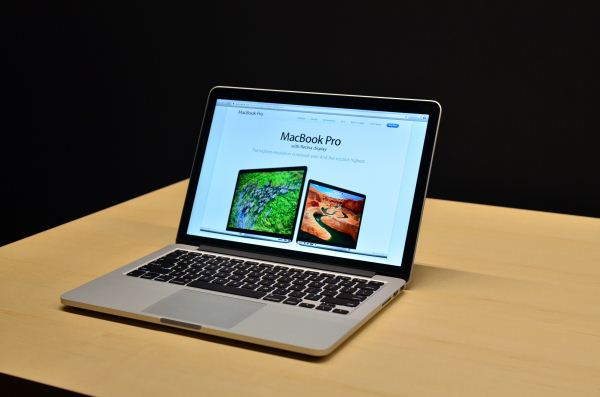






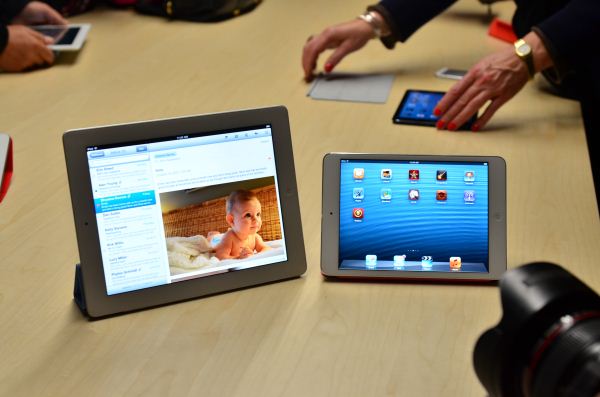
No comments:
Post a Comment